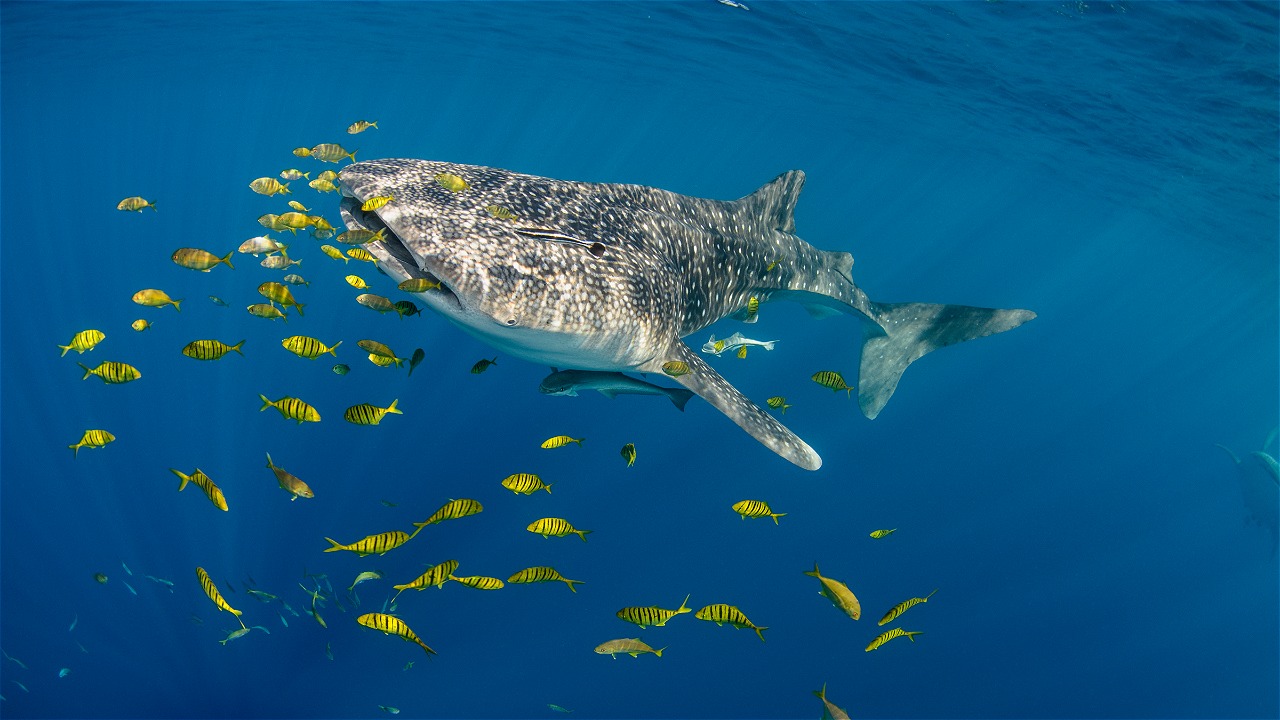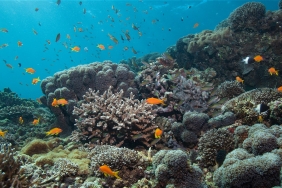FIRST ENCOUNTER WITH THE GIANT FISH
Masayu Yulien Vinanda or familiarly called Nanda has joined WWF Jakarta for 3 years as Media Content Development Officer. In addition to developing content for WWF-Indonesia's website and blog, she is also the Managing Editor of Living Planet Magazine (a magazine for WWF-Indonesia Supporters published every 4 months). Through his writing, he strives to make environmental issues more ""close"" to the lives of the wider community..Full author profile...
Nabire (30/05)-The clear sea with a collection of colorful fish and coral reefs is the beauty of underwater paradise that is always offered by a number of marine areas. However, in the waters of Kwatisore, the Cenderawasih Bay Marine Conservation Area (TNTC), West Papua, there is a unique marine charm that makes this area a magnet for marine tourism lovers.
In this location, the world's largest fish species, Rhincondon typus or whale shark often comes to the surface and swims close to the bagan (fishermen's floating house). It's no wonder, as the bagan is armed with nets filled with puri (small fish), a favorite meal of whale sharks. This whale shark is really like a pet that is always "looking forward" to the distribution of food from its master, he...Physically it is indeed large, it can reach 20 meters in length and weighs 21 tons, the look on its face at a glance looks mysterious, but this plankton-eating shark is very docile. The look of Rambo heart rinto also turns out :P
Now in each chart we can usually meet 5 to 7 individuals. A unique sight that can only be found in Cenderawasih Bay. To see the shark, which is the only member of the genus Rhincodon and its family, we can simply snorkel or even observe it from boat or chart. There's no need to wait hours for a whale shark encounter. After just a few minutes of staying around the bagan, hordes of these unique marine animals will be seen swimming close to the bagan, surfacing, opening their wide mouths, and ready to feast on the puri fish thrown overboard by fishermen. Very effortless. Even I, who is practically paranoid about the open sea, was able to snorkel for almost 6 hours. How exciting! The fear suddenly vanished, replaced with endless admiration (like Glen Fredly's song :P). At first, I was surprised to be hit by this gurano bintang (yes, Gurano bintang is the local people's affectionate nickname for this whale shark). But the shock, fear, didn't last long. The first 15 minutes at most. After that? I didn't want to get on the boat because I was so excited to hang out with this giant fish.
The uniqueness of whale sharks in this region has encouraged the management of the Cenderawasih Bay conservation area to make it the flagship ecotourism of the largest marine conservation area in Indonesia. However, supporting data such as how many whale sharks are in TNTC, where they are located, and their migration routes are still very minimal. Well, to get to know more about this whale shark, WWF-Indonesia in collaboration with the Cenderawasih Bay National Park Center (BBTNTC) and HUBBS Seaworld Institute (a non-profit research institute based in California) initiated a whale shark research and monitoring program.
At that time I was able to interview a senior researcher from HUBBS, his name is DR. Brent Stewart. I was amazed to see Brent's free dive as he attached a satellite-linked tag to a whale shark's body. Once he was close enough to the whale shark, Brent used a spear gun to shoot the tag into the side of the dorsal fin. Not too deep, only about 4 cm. The tag is placed on the dorsal fin (dorsal fin) because there is a lot of fat in that area, so the tag will not hurt or disturb the whale shark (it's a relief to hear this explanation, because it means the tag is not hurting the whale shark). Once the tag is attached, six months later it will automatically detach from the shark's body and begin transmitting data via satellite.
"Guilermo. I named the tagged whale shark Guilermo." Very Italiano, he3. Brent said that Guilermo can be compared to the name "Bill" in America. Hmm, what would it be in Indonesia? Sutarno? Wkwkwk.
Anyway, the tagging device is called a pop-up tag by researchers.
"In other areas I have researched such as Donsol in the Philippines, Western Australia, Maldives and Kenya, it is generally difficult to tag sharks. Usually we only find one shark. We can't do much sampling and observation in a very short time. But not in Kwatisore. Here, we can interact more intimately with the sharks, they are found around the chart. We can even make observations just by sitting on the boat. It's amazing," said Brent, who could not hide his amazement at the whale sharks in Kwatisore.
In addition to relying on tagging, the whale shark research team consisting of WWF Indonesia staff and local communities also identified sharks by photographing spot patterns on the shark's body using an underwater camera. Just like human fingerprints, the spot pattern on the shark's body can distinguish one individual from another.
The specific area photographed is the spot above the left or right pectoral fin because the spot is less dense than other parts of the body. In addition, scars can also be used as identification markers that distinguish one individual from another.
The hundreds of shark photos that have been collected will be used as a database that will make it easier to analyze information on whale shark movements and estimate the number of whale sharks in a location.





